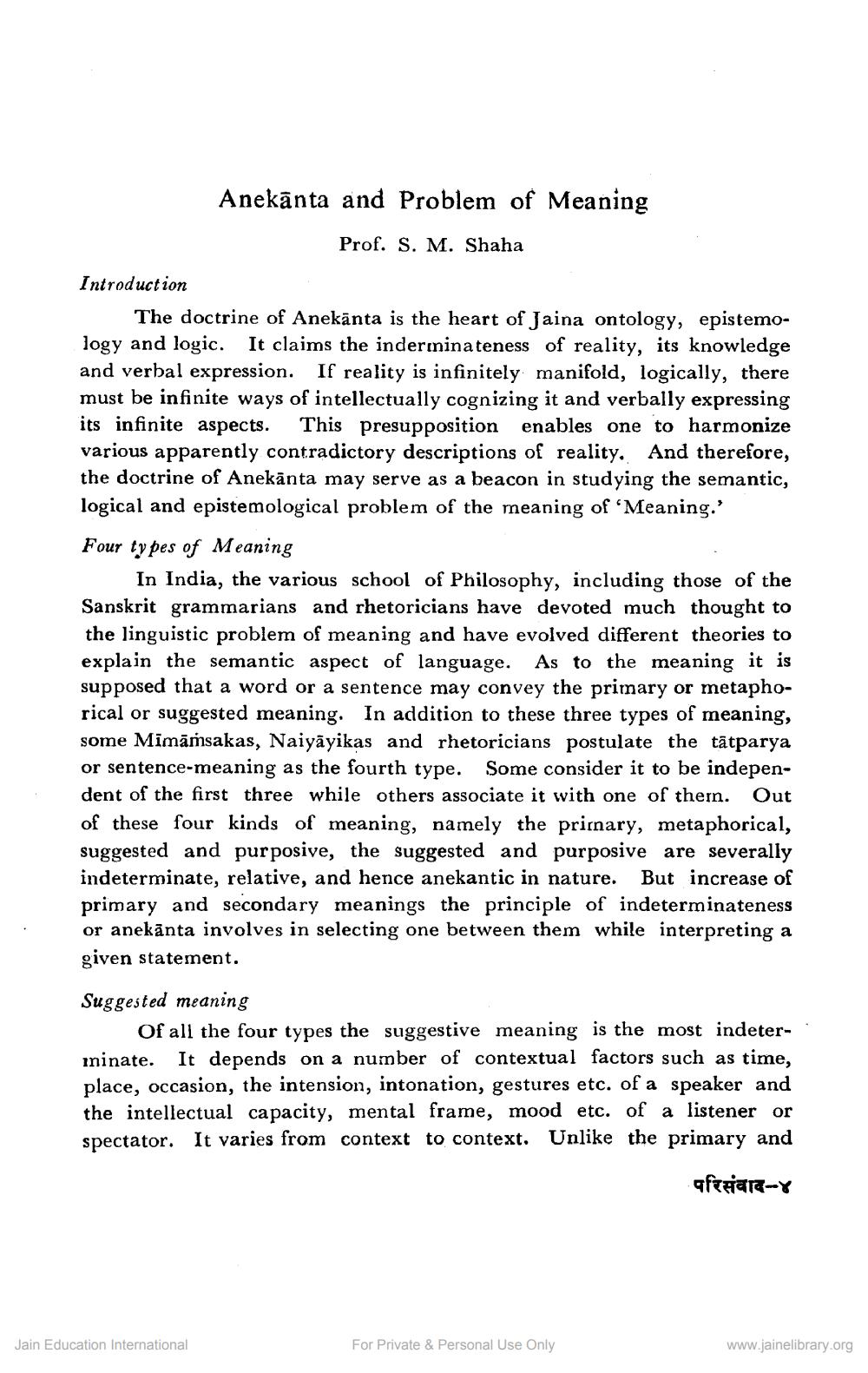Book Title: Anekanta Problem Of Meaning Author(s): S M Shaha Publisher: Z_Jain_Vidya_evam_Prakrit_014026_HR.pdf View full book textPage 1
________________ Anekānta and Problem of Meaning Prof. S. M. Shaha Introduction The doctrine of Anekānta is the heart of Jaina ontology, epistemology and logic. It claims the inderminateness of reality, its knowledge and verbal expression. If reality is infinitely manifold, logically, there must be infinite ways of intellectually cognizing it and verbally expressing its infinite aspects. This presupposition enables one to harmonize various apparently contradictory descriptions of reality. And therefore, the doctrine of Anekānta may serve as a beacon in studying the semantic, logical and epistemological problem of the meaning of 'Meaning.' Four types of Meaning In India, the various school of Philosophy, including those of the Sanskrit grammarians and rhetoricians have devoted much thought to the linguistic problem of meaning and have evolved different theories to explain the semantic aspect of language. As to the meaning it is supposed that a word or a sentence may convey the primary or metaphorical or suggested meaning. In addition to these three types of meaning, some Mimāṁsakas, Naiyāyikas and rhetoricians postulate the tātparya or sentence-meaning as the fourth type. Some consider it to be independent of the first three while others associate it with one of thern. Out of these four kinds of meaning, namely the primary, metaphorical, suggested and purposive, the suggested and purposive are severally indeterminate, relative, and hence anekantic in nature. But increase of primary and secondary meanings the principle of indeterminateness or anekānta involves in selecting one between them while interpreting a given statement. Suggested meaning Of all the four types the suggestive meaning is the most indeterminate. It depends on a number of contextual factors such as time, place, occasion, the intension, intonation, gestures etc. of a speaker and the intellectual capacity, mental frame, mood etc. of a listener or spectator. It varies from context to context. Unlike the primary and परिसंवाद-४ Jain Education International For Private & Personal Use Only www.jainelibrary.orgPage Navigation
1 2 3 4 5 6 7 8 9 10
